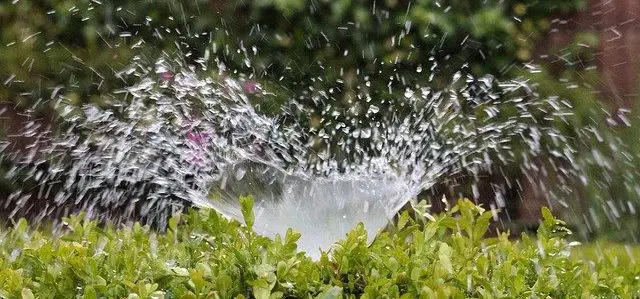Recently, I spoke with someone that wanted to aerate his lawn. He also had plans to build some “unnamed” projects in his back lawn. One of the questions we sought to answer during our conversation is “how deep are sprinkler lines buried in the ground?” I want to share the answers to this question in this article.
Contents
How deep are sprinkler lines buried?
Answer: Sprinkler lines are often buried 8 to 12 inches deep into the soil. Many people recommend burying it about 12 inches deep in the ground. This will prevent shovels with an 8-inch blade from breaking the pipes when you’re digging your lawn for construction or other purposes.
What happens if sprinkler lines are not deep enough?
You surely don’t need a seer to tell you what will happen if your sprinkler pipes are not deep. The lines will get damaged, of course, especially if there is no protective layer above the pipes or there are no marks indicating the route of the pipes on your lawn.
Regarding the protective layer, I recommend placing small rocks on top of the pipe.
What do I mean? After laying your sprinkler pipes, cover the lines with a little bit of earth and place rocks on them. Ensure that the rocks aren’t touching the pipes.
When someone is shoveling on the line, they’ll likely hit the rocks first before hitting the pipes. The sprinkler pipes are also protected from damage by aeration tools.
What if I want to find sprinkler lines on my property?
How To Find Sprinkler Lines
There are several ways to find sprinkler lines on your new property. We want to point out that you can find the sprinkler lines with or without digging.
A. How to find sprinkler lines without digging
- Get a pipe locator and scan your lawn with the pipe locator.
- Use a metal detector to find out the connectors and valves connecting the pipes. If you used plastic pipes and non-metal valves, finding the valves will be tough
- Hire a sprinkler expert to find your in-ground sprinkler line.
- Find a map layout of the sprinkler system. You can ask the local authorities if your region is mandated to use the same sprinkler system layout. If yes, you should obtain the map from them.
- Use a cloth hanger. This one’s a bit tricky, but you should watch the video below.
How to find the sprinkler lines by digging
To find the sprinkler lines by digging, you may need to turn on your sprinkler heads.
- Turn on your sprinkler system.
- Take note of how the sprinklers come on, especially if they’re arranged in a line. This will give you a fair idea of the area to which you should narrow down your digging.
- Next, try to find the installation map for the sprinkler system. Perhaps the company that installed it must have left an installation map.
- Start digging from one sprinkler head slowly with a hand trowel to find the direction of one pipe. Dig around a second sprinkler head to know if the direction is the same. Do this till you find out the arrangement of your sprinkler system.
We hope you’ll not have to dig to find your sprinkler lines. It’s a tiresome process, don’t you think so?
- How to Get Potatoes to Sprout Eyes: Detailed Growing Guide with 3 Options - July 31, 2023
- Weight of a Medium Potato: Revealed in Detailed Guide - July 29, 2023
- Maris Piper Potatoes: 9 Substitutes You Should Know About - July 27, 2023
Hello! I’m Jessica Zander, a garden coach and consultant based in the Boston area (zone 6b), offering virtual consultations across the country and Canada.
I’ve been passionate about gardening since the early 1990s, and in 2022, I launched You Can Do It Gardening to empower individuals to feel more confident in their gardening endeavors.
Following a 30-year career in nonprofit finance and operations, I transitioned out of that field in mid-June of 2023 due to the growing demand for coaching services. Interestingly, my years of presenting financial statements to boards and finance committees proved to be valuable experience for teaching people about gardening! I enjoy sharing skills, providing guidance and suggestions, and collaborating efficiently with clients to make significant improvements to their outdoor spaces, both small and large. I also regularly teach at the Arlington Continuing Education and Cambridge Adult Education.
My approach is direct and practical, akin to Mary Poppins, but tailored to your garden. Clients find satisfaction in saving money and taking pride in their own gardening achievements.


Add comment